The proper humidity in your basement can go a long way in ensuring the lifespan of your home, protecting your belongings, and ensuring your health is not compromised. An excessive amount of humidity causes structural damage as mold can develop, walls and floors emit an unpleasant odor along with damage, and a dry atmosphere may cause cracks in wood and other materials in the house. This article will provide insight to help determine the optimal setting for your dehumidifier to keep your basement safe and comfortable. For the sake of this ideal article, you will anchor the suitable control setting to prevent moisture from reaching the walls and air of your home.
What is the ideal humidity level for a basement?
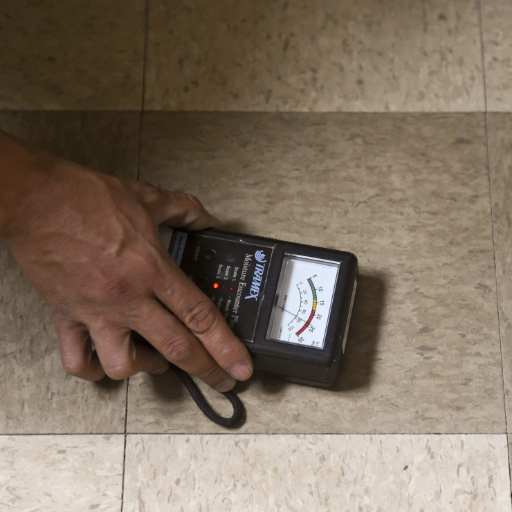
Basements are ideally supposed to have 30% to 50% humidity. Anything above 50% invites rotten smells, fungus, and mold, and dry air below 30% causes material and furniture damage. Hence, Having a level between ensures a welcoming environment. Fitting a calibrated dehumidifier in your home can significantly minimize the chances of an imbalance of ideal humidity.
Understanding relative humidity and its importance
Relative humidity (RH) is the amount of water vapor in the air expressed as a percentage of the amount of water vapor the air can hold at a specific temperature and is extremely important in forestry. An RH between 30-50% has to be reached and maintained for human health, materials’ properties, and comfort to remain within acceptable parameters. If the RH goes below 30%, the air dryness can cause lung discomfort, lead to skin rashes, and reduce the unexplained longevity of wood at which it would start to crack and split. Meanwhile, an RH that exceeds 50% creates an environment for mold, mildew, and dust mites to thrive, which may affect human health and damage buildings.
For close to accurate control of RH level, the real-time conditions of the atmosphere have to be monitored using specialized devices called hygrometers. Automated and intelligent controllers associated with modern humidifiers and the latest dehumidifiers maintain the setting automatically at the desired level. Indoor and outdoor factors such as temperature changes, air movement, and seasonal variation may affect RH levels, which must be controlled reasonably. The observance of RH level contributes significantly to improving the indoor environment and durability of furniture and construction materials used in the building.
Optimal humidity range for basements
A basement should have humidity of at least 30% and not exceed 50% RH to prevent dust mites, mold, and structural damage and ensure a healthy environment. Temperature and humidity should be monitored regularly with a hygrometer, and if needed, dehumidifiers should be employed during the wetter months. It is crucial to keep the humidity within the recommended level for a basement to establish and maintain a healthier environment.
How humidity levels affect mold growth and air quality
Temperature and relative moisture greatly influence indoor quality as mold thrives on moist air, significantly if the relative humidity exceeds 60%. Molds are emitted from various indoor sources and can be found on wood, drywall, and carpets. Once the indoor air contains sufficient moisture and nutrients for the idle spores, they germinate, release mycotoxins and spores, and multiply. Mold irritates respiratory organs and causes allergies, amongst many other things. However, if basements maintain their humidity between 30% and 50%, air improves, mold is prevented from growing, and allergens such as dust mites are reduced. Ventilation, dehumidifiers, and air conditioning play a significant role in such scenarios, allowing for better air quality.
How do I determine the right dehumidifier setting for my basement?
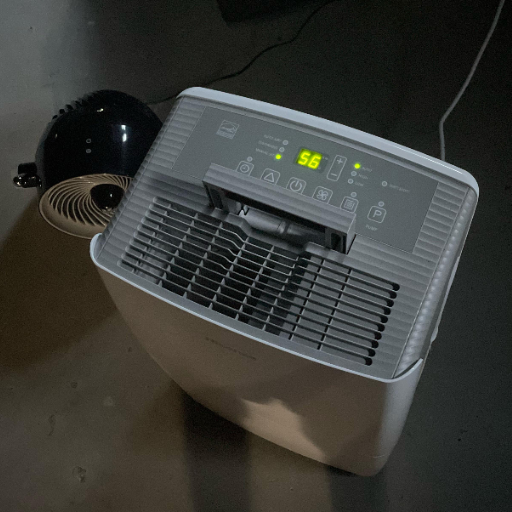
To find the proper humidity settings for your basement, use a hygrometer to measure the relative humidity levels. For instance, the humidity setting should be kept within the range of 30%-50%; this will help prevent allergens and mold from growing. If the hygrometer indicates that the moisture levels are even higher, consider moving the dehumidifier to the lower setting of the 30%-40% range and let the situation balance out. Other things, such as the air circulation, the size of the basement, and already present moisture levels, also need to be kept in mind. Lastly, checking whether the dehumidifier can handle the basement’s square footage is also necessary for dehumidifiers to work correctly.
Factors influencing basement humidity levels
Certain direct aspects influence basement humidity levels. For example, insufficient proper ventilation or zero ventilation will trap moisture, raising humidity levels. Additionally, excess flooding after heavy rainfall can lead to higher moisture levels. The foundation drainage and groundwater can add to this issue. Another significant factor is the seasonal temperature change; higher temperatures in the summer can increase evaporation and condensation, which raises humidity levels in the basement. There are many ways these issues can be dealt with beforehand, such as turning on an electric fan or sealing cracks, which can help to improve the air circulation in the basement and increase humidity levels.
Using a hygrometer to measure moisture in the air
A hygrometer is an outstanding device for measuring relative humidity in certain areas, like your basement. It measures air moisture content as a percentage of the allowable air’s moisture content for a given temperature. To use a hygrometer correctly, place it in the area you wish to control relative humidity, particularly away from bright lights, draughts, or heat, to ensure the accuracy of the device’s readings.
Digital hygrometers are practical since they do not need much training, give precise readings, and have temperature-tracking features and mammoth memory space. However, analog hygrometers come with less sophistication and are best used with devices that transmit in high volume, but for long-term usage, they are reliable. The range of indoor relative humidity safe for mold to grow, structural damage to occur, and discomfort to occur is 30 to 50 percent. Homeowners can measure humidity with a hygrometer, identify deviations from the set range, and take action, such as using dehumidifiers, increasing ventilation, or repairing leaks. Calibration of the hygrometer is done depending on the manufacturer’s specifications; this is done to ensure that correct readings are obtained.
Adjusting settings based on seasonal changes
As the seasons shift, I take the necessary steps to regulate humidity levels indoors. During the winter, I set the relative humidity to 30 to 40 percent to avoid condensation on windows. In the summer, I target it in the 40 to 50 percent range to achieve a comfortable indoor atmosphere and prevent the spread of mold. I keep moisture in check by using a hygrometer and then placing a dehumidifier humidifier as needed while maintaining energy efficiency and air quality priorities in mind.
What are the best dehumidifier settings to prevent mold and mildew?
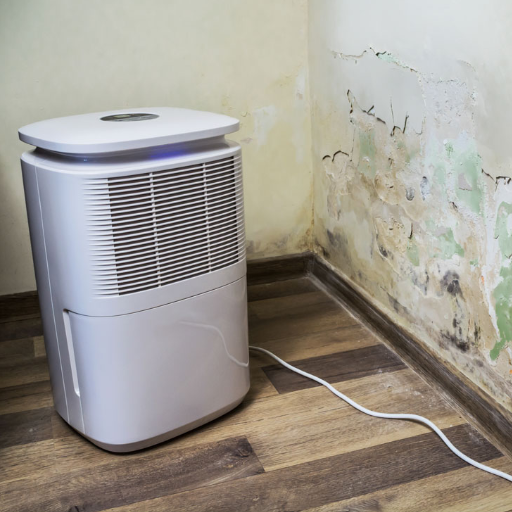
Keeping indoor dampness within 30 to 50 percent is advisable to inhibit mold and mildew development. Such a range for your dehumidifier works primarily for mold inhibition, as mold tends to flourish in greater humidity. Furthermore, to increase efficiency, it is best to use a hygrometer to gauge the moisture and set the dehumidifier based on its readings. However, ensure the setting is not too low, and the air becomes dry and unbearable.
Balancing humidity for comfort and mold prevention
Humidity must be maintained between 30% and 50% for comfort and to restrain the growth of mold, mildew, and dust mites. If humidity exceeds the requisite, these indoor pollutants can negatively affect health due to poor indoor air quality. At the same time, low humidity can cause dry skin, respiratory airway irritation, and damage to wooden furniture.
A good hygrometer can help track and control humidity levels very closely. Dehumidifiers should be used in moisture-producing settings like basements and bathrooms, and proper ventilation and airflow should be maintained. Fix leaks and cracks as these contribute to unwanted moisture in a structure. Additionally, humidifiers can always be used for conditions that are too dry, especially when the heating system is in use to increase moisture content in an area when required. Combined with regular indoor maintenance, these approaches can significantly reduce or eliminate the chances of mold formation, resulting in a healthier and nicer indoor environment.
Signs of excessive moisture and when to adjust settings
Moisture may accumulate in specific areas within an indoor space, and this excess atmosphere can show through sure signs. Some signs include water dripping from windows, musty smells, fungal growth, damp wood, discolored walls, ceilings, and peeling paint. Also, individuals suffering from allergies, asthma, or other airway diseases can experience increased severity around mold and dust mites in excessively moist surroundings. Ideally, the air humidity levels should be kept at approximately thirty to fifty percent to solve such issues.
Changes in humidity levels can be solved by using a hygrometer to keep track of moisture concentration while increasing air circulation with fans, installing heat-extracting units, or improving air ventilation systems. Appropriate changes are recommended for fans, heat extractors, and circulation units to accomplish this. Furthermore, one way of maintaining indoor moisture and airflow is to set proper levels of humidifiers, as there may be places where the air feels excessively dry. With regards to dryness, humidifiers are key. Knowing what to set each device to is key to avoiding mold or interior disrepair. It is key to properly balancing these devices in each environment.
How often should I run my basement dehumidifier?
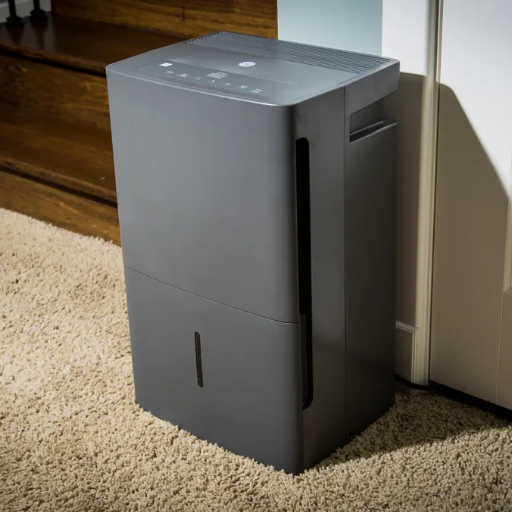
The amount of operational time that your basement dehumidifier needs depends on the area’s humidity level. Ideally, hygrometer readings should be between 30-50% relative humidity (RH). During hot, humid summer days or immediately after heavy rain showers, there is a need to keep the dehumidifier running to prevent moisture accumulation. When humidity levels are relatively low, for example, in winter, it may be sufficient to run it for several hours a day. Using these appliances only when needed can save energy and allow you to meet the required RH.
Continuous operation vs. intermittent use
When deciding its operation method, the situation in which you intend to use the dehumidifier also matters. If your goal is complete control over the humidity levels in the room, then that would be quite different from using it in a standard, humid environment. In most cases, keeping it on entirely was ideal, and it is done in most basements, laundry rooms, and even leak-prone areas. This mode ensures the best relative humidity of 30-50% and prevents mold or mildew from developing. This is also well suited, especially for regions with high moisture levels.
At the same time, there may be circumstances when occasional usage is enough, for instance, if the location is such that moisture does not exceed a certain level or is unstable. By doing so, there is an opportunity to save electricity and extend the service life of the humidifier by running it as required during high humidity. The same is applicable in ventilated areas or dry seasons. Whether the humidifier runs constantly or operates intermittently, a hygrometer is necessary to moderate humidity in both cases. There is the possibility of running the device without restraints on moisture while keeping a reasonable amount of power use and having an adequate power use capacity in the care setting.
Energy-saving tips for dehumidifier usage
Moderation of the dehumidifier’s settings through a detailed window arrangement helps reduce overhead costs on ownership. Additize matches this with a strategic inclination to the low end of a thirty to fifty percent humidity level that helps enhance the unit’s residual capabilities. I also ensure that the dehumidifier is situated centrally, allowing maximum exposure without using multiple units, thereby optimizing air ventilation. However, maintaining it is also equally important: I often clean the filter and quickly empty the water tank to hold the device in regular operating mode and not load it. Finally, I run the dehumidifier during peak humidity, which has also turned out to be a good solution for lowering energy use without losing moisture content.
Adjusting run time based on humidity levels
To find the optimal dehumidifier runtime, one must consider the humidity levels of the area of use. Indoor humidity levels should ideally fall somewhere between 30-50%. However, if the humidity levels exceed 60%, the dehumidifier should be kept on until the humidity drops to the desired level. During summers or periods of extreme rainfall, using the dehumidifier for about 8-12 hours of the day becomes necessary. If the humidity levels are not that high, it is suggested that a hygrometer be used to limit dehumidifier use and increase efficiency. Moreover, programmable timers reduce energy wastage as the device runs only when there is a change in humidity.
What’s the difference in settings for finished vs. unfinished basements?
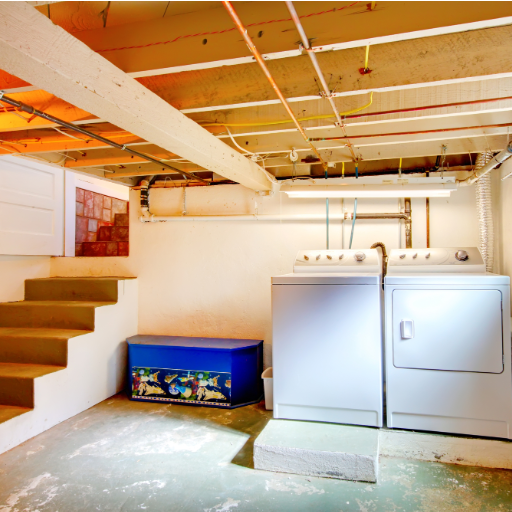
To best control the possibility of mold growth and prevent the warping of drywall or the destruction of furniture, humidity between 30-50% should be maintained in finished basements using dehumidifiers. On the other hand, unfinished basements are more susceptible to moisture and do not consider structural appearance, so a slightly elevated humidity level between 40-60% is optimum for such structures. Likewise, Both settings need to be supervised with a hygrometer to avoid mold and mildew growth.
Humidity control in finished basements
Humidity control is significant for finished basements as it helps maintain structural stability and enhances air quality. A recommended threshold is between 30-50% as it helps reduce the chances of mold formation and preserves materials such as wood, drywall, and upholstery from condensation. De humidifiers are also recommended to be used primarily during the warm months. Other methods to control condensation are adding insulation to walls and floors and increasing ventilation in basements to allow for better circulation. Throughout all these processes, the standard and reliable hygrometer should always be present to keep track of the fluctuating conditions of the basement.
Managing moisture in unfinished basement spaces
I take a multifaceted approach with unexposed basements, where moisture management remains a priority. To illustrate, I almost always employ a reputable dehumidifier to keep indoor humidity levels under 50%, especially in summer. In parallel, applying sealants to cracks and gaps in the floor and walls of the basis is also crucial. Furthermore, insulation materials, incredibly rigid and spray foam, which are moisture resistant, are helpful as they serve as barriers against condensation. Moreover, dampness can also be minimized by enhancing airflow with exhaust fans or vented windows. I even use a hygrometer to keep track of the humidity and temperature in the space so I can act on fluctuations in time and avoid issues. This strategy helps me maintain a dry, healthy basement environment that is not susceptible to moisture gain over time.
Adapting settings for partially finished basements
I have also recommended employing proper moisture control while ensuring the configuration remains suitable for partially finished basements. This might entail sealing cracks or gaps in the foundation or walls using suitable sealants to mitigate the risk of water intrusion. Also, employing a dehumidifier can maintain the humidity below sixty percent, significantly preventing moisture vulnerability. Moreover, adequate insulation remains available, where fiberglass or rigid foam can be employed.
It is essential to ensure lighting and ventilation are adequate. Lighting options such as recessed or track lighting can be used in the space without taking up more room. Ventilation fans serve to move and extract stagnant air within the environment. As a multifunctional room, if the area is partially used as an office and for recreation, one would use moisture-resistant variable height shelving and tiled concrete flooring to maximize functionality while still visually appealing. For the efficiency of the mentioned methods after the initial setup, timing requires routine.
How do I set up my dehumidifier for optimal performance?
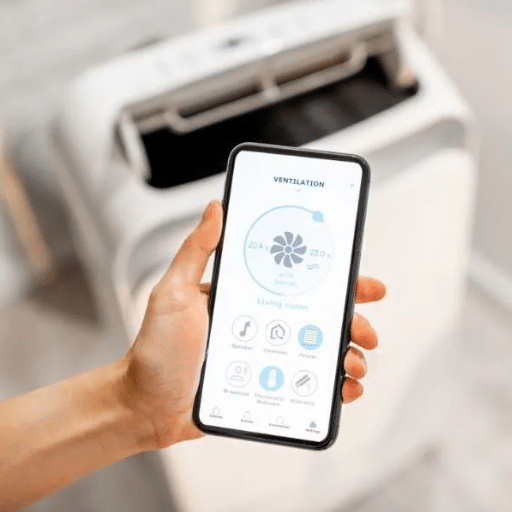
To position your dehumidifier for maximum efficiency, locate it towards the middle of the area and allow for a minimum of 12 inches of open space around the unit. Connect the dehumidifiers to a functioning plug depending on the room, and choose the appropriate dew point setting from 30% to 50%. Close all windows and doors to optimize output if the device permits nonstop use; frequently empty the water tank or put in a draining pipe. Periodically replace the air filters with new ones per the manufacturer’s guidance to keep the machine in good working order.
Choosing the best location for your dehumidifier
For the dehumidifier to function at an optimal level, make sure always to select the ideal location first. Indoor areas with a higher humidity level, such as basements, bathrooms, or laundry rooms, make ideal settings. However, ensure the unit is placed on a sturdy, leveled surface to avoid tipping over. Maintain a distance of 6-12 inches from the walls or nearby furniture to ensure airflow is always unobstructed. Ensure that windows and doors are firmly shut in the room where the dehumidifier is placed, and if the space permits, the device itself can be placed in the center or close to the source of excess humidity. These steps eliminate the dust and grease that builds up and restricts the device’s filters from functioning efficiently. Keeping the device in its ideal location helps with its performance and drastically increases its lifespan.
Proper airflow and drainage considerations
For maximum operational efficiency, I take measures to ensure adequate drainage and airflow. I begin by periodically shifting the dehumidifier away from walls and other items to maintain the recommended distance of 6 to 12 inches. Secondly, I replace the air filter commonly to avoid hindrances in performance. Furthermore, I opt for the continuous drainage feature, which allows me to empty the water tank, or I set up a drain hose, ensuring that it rests at a slant to ensure water does not backflow. In addition to this, I also routinely check the drain hose for clogs or kinks to avoid obstruction, and these measures combined allow efficient operational performance.
Maintaining and cleaning your dehumidifier
To ensure that the lifespan of the dehumidifier is long, it is imperative that regular cleaning is conducted. The cleaning itself is comprised of multiple tasks. Firstly, I turn off the dehumidifier and remove any potential plugs which may act as an electrical hazard. The air filter is then cleaned, though the interval at which it is cleaned varies from user to user, depending on the device’s usage. Once two to three weeks have been completed, I run hand-warm water over the filter and allow it to dry before putting it back. In the case of being non-reusable, I gently brush off any leftover debris from the filter or utilize the vacuum.
To start with, clean the water collection tank regularly to prevent the development of mold and bacteria. When washing the tank, use mild soap and warm water, and ensure it is adequately rinsed and dried thoroughly before placing it back in the dehumidifier. Carry out checkups on the coils and vents to look for dust buildup. Using a vacuum with a soft brush attachment or a microfiber cloth can help clean these components carefully without damaging them.
For dehumidifiers with a constant drainage facility, it’s essential to review the drain hose monthly for clogs or bends and flush it with water where required. Again, paying attention to wiping off dust and dirt on all external surfaces using a damp cloth is essential. The appropriate care must be provided consistently to ensure the safe operation and prevention of wear and tear of the dehumidifier.
When should I adjust my basement dehumidifier settings?
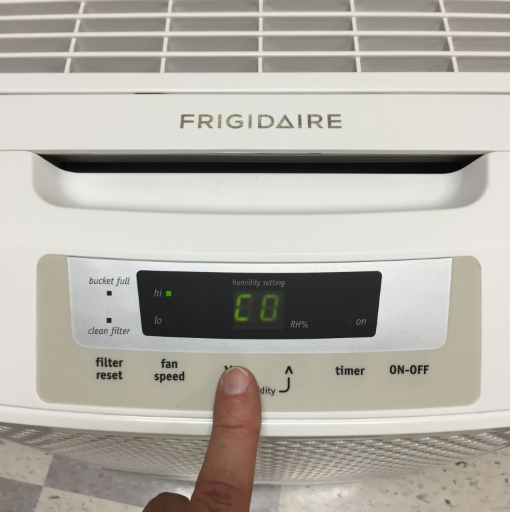
In summer, air flushing is required of 30 to 50 percent, especially when left unattended, as it may also multiply moisture and discomfort during winters. It can be adjusted to 40 to 50 percent if it seems dry. If encountered with too much humidity, cutting results in heavier condensation on glasses, while cutting them may allow an odor of musty or occasional visible mold. A hygrometer can be beneficial in regulating the moisture humidity required in the basement.
Seasonal adjustments for humidity control
Adjusting the settings of the basement dehumidifier requires one to consider the season or particular environmental conditions. For summer, to ensure the absorption of dechlorinator beads in high humidity, the recommended ideal setting range is 30 to 50 percent. Meanwhile, the active range can be 40 to 60 percent for a chilly winter. This would prevent undue drying out, resulting in wooden materials or furniture from getting damaged. A hygrometer can assist in accurately measuring results and adjustments while ensuring comfort for the room and limiting heat. Adjustments are crucial in protecting the walls from excess condensation. To explain further, the effectiveness of these adjustments depends on temperature changes accompanied by shifting of humidity.
Responding to weather changes and indoor activities
In response to weather fluctuations, I periodically check the setting on my dehumidifier and after some household activities. If, for example, the weather gets rain and humidity levels increase, I make sure the dehumidifier is switched on all the time to absorb the excess moisture getting into the house. I limit its use on dry days to save energy and optimize humidity. Other activities such as laundry, showers, and even cooking tend to raise the moisture levels in the room, which is why I also use the ventilation system, like the exhaust fans, with the dehumidifier. I use a hygrometer, in that my standard aim is to keep humidity between 30% and 50%, then adapt rapidly to my surroundings to keep it comfortable while protecting my space.
Fine-tuning settings for comfort and efficiency
A dehumidifier needs to be set at an optimal level so a good balance between the comfort and the efficiency of the device is achieved. First, the relative humidity should be set to 30-50%, which is the range recommended by the EPA for indoor air since, at this level, indoor air is comfortable, and mold growth is prevented. The humidity is excessive in summer or after rain, so we run the dehumidifier for long periods. During winter, when the humidity is lower, we can turn it off to save energy.
It is good practice to consider the placement of the dehumidifier while aiming towards maximizing airflow. Hence, keeping it at the center or where moisture is formed at most is recommended, such as in the bathroom or the basement. This will enhance the efficiency and lifespan of your dehumidifier, regular air filter cleaning, and checking whether the water tank has been drained or if there are working drainage systems. More complex ways of incorporating dehumidifiers involve inbuilt timers and energy-efficient modes, these should be used where appropriate especially for activities like laundry or meal preparation. A room is usually set at a proper humidity level, which, in this case, can be achieved using a hygrometer.
References
Frequently Asked Questions (FAQ)
Q: How do I run a dehumidifier effectively in my basement?
A: To run a dehumidifier effectively in your basement, set it to maintain a relative humidity (RH) level between 30% and 50%. Place the unit in a central location, ensure proper air circulation, and regularly empty the water tank or use a continuous drain hose. Clean the filter monthly and keep doors and windows closed while the dehumidifier runs.
Q: What is the ideal basement humidity level?
A: The ideal basement humidity level is between 30% and 50% relative humidity (RH). This range helps prevent mold growth, musty odors, and water damage while maintaining good indoor air quality. During summer months, you may need to aim for the lower end of this range due to increased moisture in the air.
Q: How often should I run the dehumidifier in my basement?
A: The frequency of running your dehumidifier depends on your basement’s moisture levels and the season. You may need to run it constantly in humid climates or during summer. In drier seasons, running it for a few hours daily may suffice. A hygrometer monitors humidity levels and adjusts usage to maintain the desired humidity between 30% and 50% RH.
Q: What size dehumidifier do I need for my basement?
A: The size of the dehumidifier you need depends on your basement’s square footage and moisture levels. For a moderately damp 500-1500 sq ft basement, a 30-50 pint dehumidifier is usually sufficient. For damp basements of the same size, consider a 50-70 pint unit. More extensive or highly wet basements may require commercial-grade dehumidifiers.
Q: How can I prevent condensation and water damage in my basement?
A: To prevent condensation and water damage, use a dehumidifier to control humidity levels, ensure proper ventilation, seal any leaks or cracks in walls and floors, use a vapor barrier on concrete floors, and insulate cold water pipes. Additionally, consider using a sump pump to remove excess water and keep gutters clean to prevent water from seeping into the basement.
Q: Should I use a dehumidifier or a humidifier in my basement?
A: Basements typically require a dehumidifier to remove excess moisture from the air. Humidifiers are rarely needed in basements, as they usually have higher humidity levels due to their below-ground location. Use a hygrometer to measure the relative humidity in your basement. If it’s consistently above 50% RH, you need a dehumidifier. Consider a humidifier if the humidity drops below 30% RH, which is uncommon in basements.
Q: How can I improve the indoor air quality in my basement?
A: To improve indoor air quality in your basement, start by controlling humidity with a dehumidifier set to maintain 30-50% RH. Ensure proper ventilation by using exhaust fans or opening basement windows when weather permits. Clean regularly to reduce dust and allergens, use air purifiers with HEPA filters, and promptly address mold or mildew issues. Consider using low-VOC paints and materials for any home improvement projects in the basement.
Q: What should I do if my dehumidifier is running constantly but not reducing humidity?
A: If your dehumidifier runs constantly without reducing humidity, check if it’s appropriately sized for your basement. A unit that’s too small may struggle to keep up with moisture levels. Ensure all doors and windows are closed and check for any water leaks or sources of moisture. Clean or replace the air filter and coils, and make sure the unit isn’t placed near humid air sources. If problems persist, consider upgrading to a larger or more efficient dehumidifier or consult a professional for potential underlying moisture issues.



